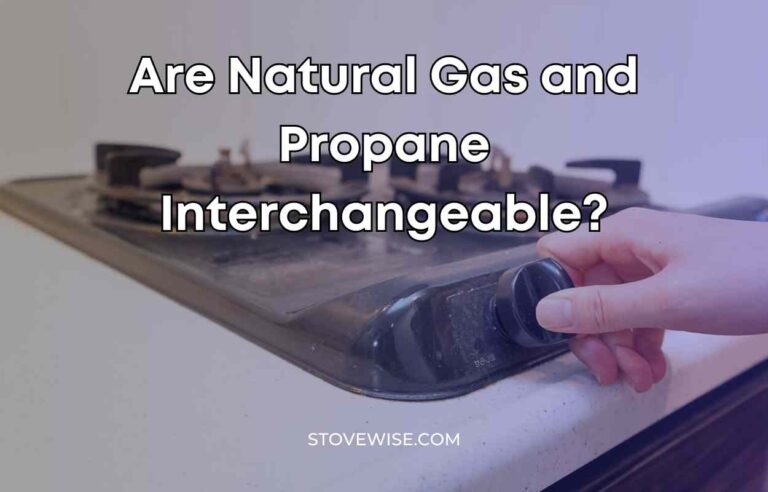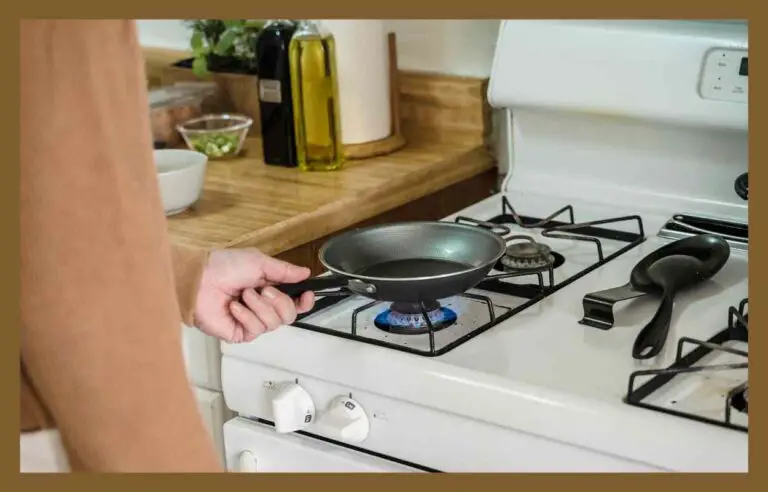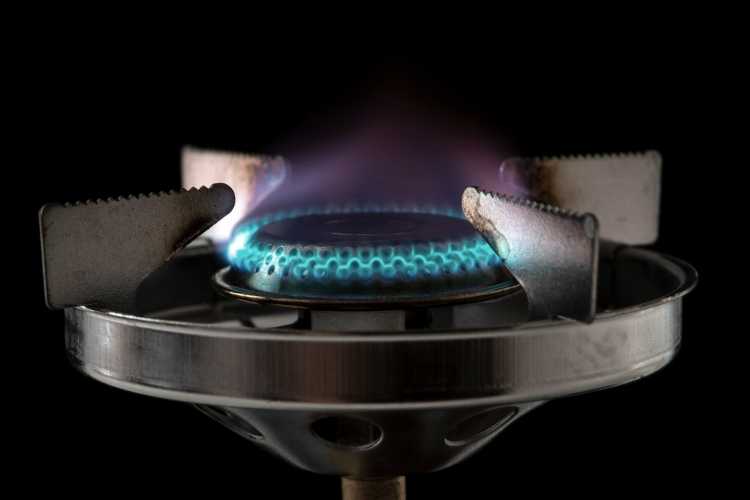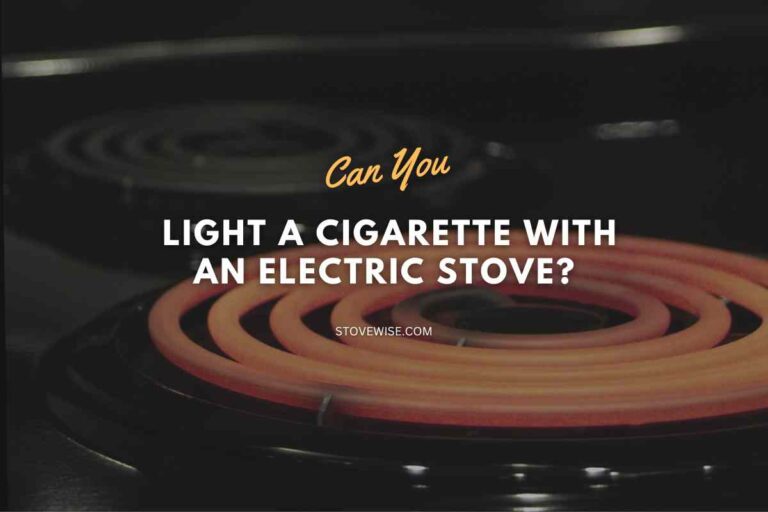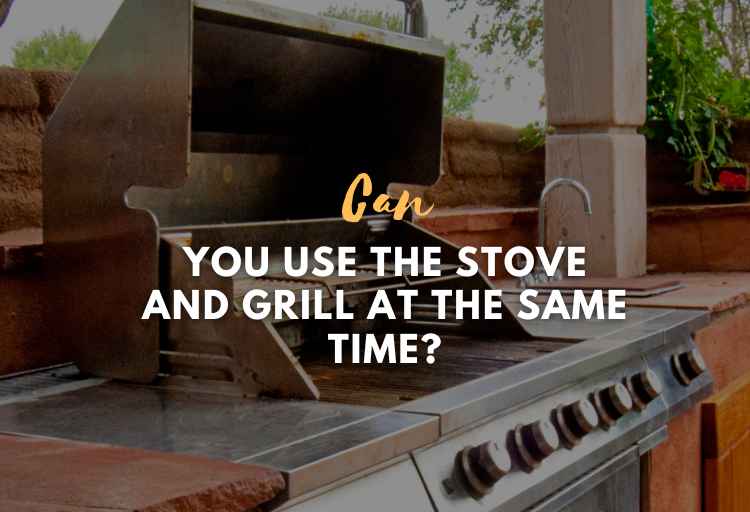Do Chefs and Bakers Prefer Gas or Electric Stoves?
When it comes to culinary prowess, the choice of stove can make a significant impact on a chef’s or baker’s cooking experience. The eternal debate between gas and electric stoves continues to ignite discussions in the culinary world.
Do Chefs and Bakers Prefer Gas or Electric Stoves?
Chefs often prefer gas ovens due to faster cooking times, precise temperature control, cost-efficiency, and reliability. Bakers, however, tend to choose electric ovens, especially conduction ovens, for their even heat distribution and consistent baking results.
In this guide, we’ll delve into the preferences of chefs and bakers, examining the merits of both gas and electric stoves to determine which one truly reigns supreme in the kitchen.
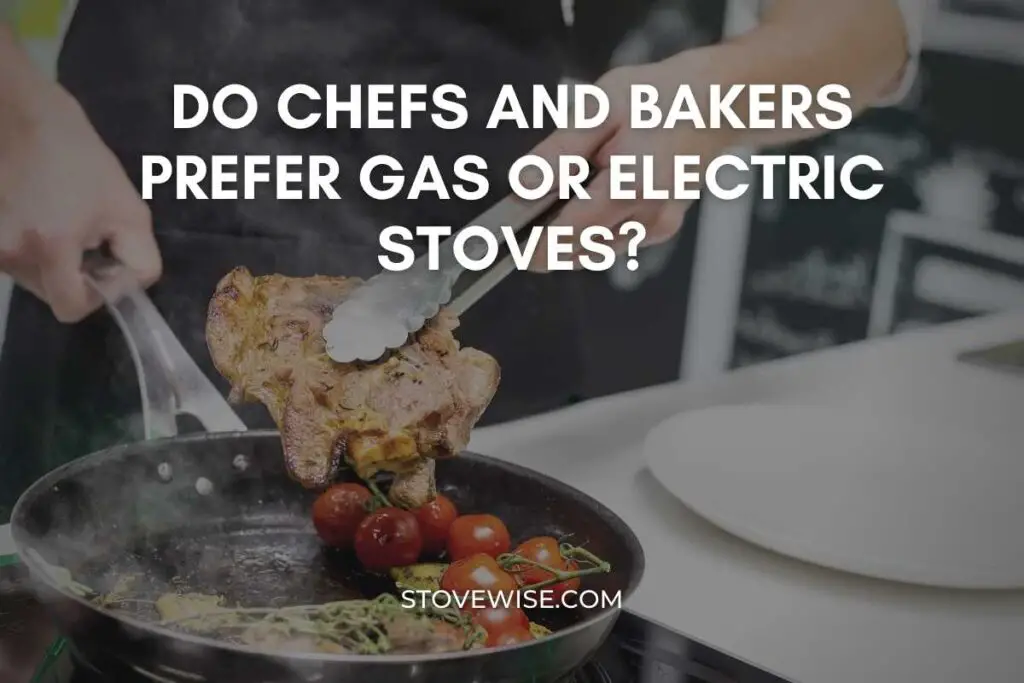
Contents
- Why Do Chefs Prefer Gas Ovens, but Bakers Favor Electric Ones?
- What Type of Stove Do Professional Bakers Use?
- Comparison Chart for Gas vs Electric Stoves
- What Are the Different Types of Stoves?
- What’s the Difference Between an Electric Oven to a Stove Oven?
- Pros and Cons of Gas Stove
- Pros and Cons of Electric Stove
Why Do Chefs Prefer Gas Ovens, but Bakers Favor Electric Ones?
Chefs and bakers have different priorities when it comes to cooking and baking, which is why they may prefer different types of ovens.
Here is a detailed explanation of why chefs typically prefer gas ovens and bakers favor electric ones:
1. Temperature Control
Chefs often need precise and instant temperature control for various cooking techniques, such as sautéing or pan-searing. Gas ovens provide this level of control, as the flame can be quickly adjusted to the desired heat level. Electric ovens, on the other hand, take longer to adjust the temperature, which can be less suitable for some cooking methods.
2. Heat Distribution
Bakers require even heat distribution to ensure consistent results when baking cakes, pastries, and other delicate items. Electric ovens, especially convection ovens, excel in this aspect, as they circulate the hot air evenly throughout the oven cavity. Gas ovens can sometimes have hot spots, which may lead to uneven baking.
3. Cooking Time
Gas ovens heat up faster than electric ones, which is advantageous for chefs who need to quickly prepare multiple dishes or cook on high heat. While this feature might not be as crucial for bakers, they still benefit from the consistent temperature that electric ovens provide.
4. Cost and Energy Efficiency
Gas ovens are generally more cost-effective to operate than electric ones, especially in regions where natural gas is less expensive than electricity. Chefs, who often work in high-volume commercial kitchens, may prioritize this aspect. Bakers, on the other hand, may be willing to accept higher operating costs for the sake of better baking results.
5. Reliability
Gas ovens are known for their reliability, as they are less prone to malfunction compared to electric ovens, which have more complex components. Chefs may prefer gas ovens for their dependability, especially in demanding commercial environments.
What Type of Stove Do Professional Bakers Use?
Professional bakers often prefer using gas stoves for their baking needs. Gas stoves offer several advantages that align with the demands of professional baking.
Firstly, gas stoves provide precise temperature control, allowing bakers to adjust the heat quickly and accurately. This feature is particularly beneficial for tasks that require rapid temperature changes, such as searing, broiling, or creating artisan bread.
Additionally, gas stoves offer instant heat, enabling bakers to start baking immediately without waiting for the oven to preheat. This efficiency is crucial in a fast-paced professional kitchen, where time is of the essence.
Furthermore, gas stoves provide more intense and direct heat, allowing bakers to achieve the desired crust and texture in their baked goods. Gas flames offer superior control over heat distribution, resulting in even browning and a crispy exterior.
While electric stoves have their merits, such as more consistent heat distribution, professional bakers often prefer the versatility and precision of gas stoves in their pursuit of perfect baked goods.
Comparison Chart for Gas vs Electric Stoves
Here’s a detailed comparison chart comparing gas and electric stoves:
| Criteria | Gas Stove | Electric Stove |
|---|---|---|
| Heat Source | Flames from natural gas or propane | Electric heating elements or coils |
| Heat Distribution | Immediate and more even heat distribution | Slightly slower and less even heat distribution |
| Temperature Control | Instantaneous and precise temperature control | Gradual heat adjustment with a slight lag |
| Energy Efficiency | Generally more efficient due to direct flame heating | Efficiency can vary; induction cooktops are highly efficient |
| Cost of Operation | Lower operating costs due to natural gas or propane | Higher operating costs due to electricity consumption |
| Installation | Requires gas line installation and proper ventilation | Requires electrical outlet and appropriate circuitry |
| Safety | Open flame poses potential fire and gas leak hazards | No open flame, reducing fire and gas leak risks |
| Maintenance | Regular cleaning is required for burners and gas components | Easy to clean smooth surfaces; coils may require upkeep |
| Cooking Performance | Immediate heat adjustments for better control and responsiveness | Slightly slower heat adjustments, but even cooking |
| Environmental Impact | It Emits carbon dioxide and other greenhouse gases | Lower carbon emissions if electricity is from renewable sources |
| Cooking Experience | Preferred by professional chefs for precise control over heat | Familiar to most home cooks; suitable for various cooking styles |
What Are the Different Types of Stoves?
Bakers have several types of stoves to choose from based on their specific needs and preferences. Here are the different types of stoves commonly used by bakers:
Gas Stoves
Gas stoves are a popular choice among bakers, especially in professional settings. They use natural gas or propane as a fuel source and offer precise temperature control.
Gas stoves provide instant heat and allow for quick adjustments, making them suitable for tasks that require rapid temperature changes or intense heat, such as searing or broiling.
The direct flame of a gas stove also contributes to achieving desirable crusts and textures in baked goods.
Electric Stoves
Electric stoves use electricity as their power source. They are known for their even heat distribution, which is advantageous when baking delicate pastries, cakes, and custards that require consistent temperatures throughout the oven.
Electric stoves often have accurate temperature settings and offer precise control, allowing bakers to maintain a specific temperature for extended periods. However, they may take longer to heat up and adjust compared to gas stoves.
Convection Ovens
Convection ovens are a specific type of oven that can be found in both gas and electric variations.
These ovens use fans to circulate hot air evenly throughout the cooking chamber, resulting in more efficient heat distribution. Convection ovens are especially beneficial for baking, as they help to achieve even browning and faster cooking times.
The circulating air also allows bakers to bake multiple trays of goods simultaneously without worrying about uneven heat.
Dual-Fuel Ranges
Dual-fuel ranges combine the benefits of both gas and electric stoves. They typically feature a gas cooktop and an electric oven.
This setup provides the precision and control of gas cooking on the stovetop, while the electric oven offers even heat distribution for baking.
Dual-fuel ranges are often favored by bakers who value the versatility of gas for stovetop cooking and the consistency of electric ovens for baking.
Induction Cooktops
Induction cooktops are gaining popularity among bakers. These cooktops use electromagnetic fields to heat the cooking vessel directly, resulting in rapid and precise heating.
Induction cooktops offer excellent temperature control, fast response times, and energy efficiency.
However, it’s important to note that not all baking vessels are compatible with induction cooktops, as they require ferromagnetic materials for effective heat transfer.
What’s the Difference Between an Electric Oven to a Stove Oven?
An electric oven and a stove oven, also known as a gas oven, are two different types of ovens commonly found in households. Here are the key differences between them:
Heating Method
The primary difference between an electric oven and a stove oven lies in how they generate heat.
An electric oven uses electric heating elements located at the top and bottom of the oven cavity. These elements produce heat, which then radiates throughout the oven.
In contrast, a stove oven, which is typically fueled by natural gas or propane, uses a gas burner located at the bottom of the oven. The burner ignites and produces a flame, generating heat that rises and heats the oven cavity.
Heat Distribution
Electric ovens and stove ovens differ in their heat distribution patterns. Electric ovens generally provide more even heat distribution due to their heating elements placed strategically around the oven.
This helps ensure consistent cooking and baking results. In contrast, stove ovens may have areas of uneven heat distribution, resulting in potential hot spots or cooler areas.
However, this can be mitigated by rotating the food during cooking to achieve more balanced results.
Temperature Control
Electric ovens and stove ovens also differ in terms of temperature control. Electric ovens typically offer more precise temperature control with digital displays and pre-set temperature options.
They also tend to have more accurate temperature readings, allowing bakers to set specific temperatures for their recipes.
Stove ovens, on the other hand, often rely on manual temperature controls, such as knobs or dials, which may offer less precision in temperature adjustment.
Preheating Time
Electric ovens generally take longer to preheat compared to stove ovens. The heating elements in electric ovens need time to reach the desired temperature, whereas the open flame in a stove oven provides immediate heat.
However, advancements in technology have led to faster preheating times in some electric oven models.
Utility Connections
Electric ovens require a dedicated electrical circuit to operate, usually with a higher voltage rating. They rely on electricity as their power source.
Stove ovens, on the other hand, require a natural gas or propane connection for the gas burner to function.
This difference in utility connections may impact the availability and installation requirements of each type of oven.
Pros and Cons of Gas Stove
| Pros | Cons |
| Gas Stoves offer precise temperature control, allowing for quick adjustments. | Higher upfront cost compared to electric stoves. |
| These stoves tend to retain more moisture than electric ovens. | The use of gas poses certain safety considerations and proper ventilation is crucial. |
| Gas Stoves often provide more even heat distribution than electric stoves. | Require a gas connection, which may not be readily available in all areas. |
| Generally, gas stoves are more energy-efficient than electric ovens. |
Pros and Cons of Electric Stove
| Pros | Cons |
| Electric stoves provide more consistent heat distribution throughout the cooking surface, resulting in evenly cooked food. | These stoves may have slower heat adjustment compared to gas stoves. |
| These stoves often have more accurate temperature control, with digital displays and pre-set temperature options. | Electric ovens typically take longer to preheat compared to gas ovens. |
| Electric stoves are generally easier to clean compared to gas stoves. | They are generally less energy-efficient than gas stoves. |

